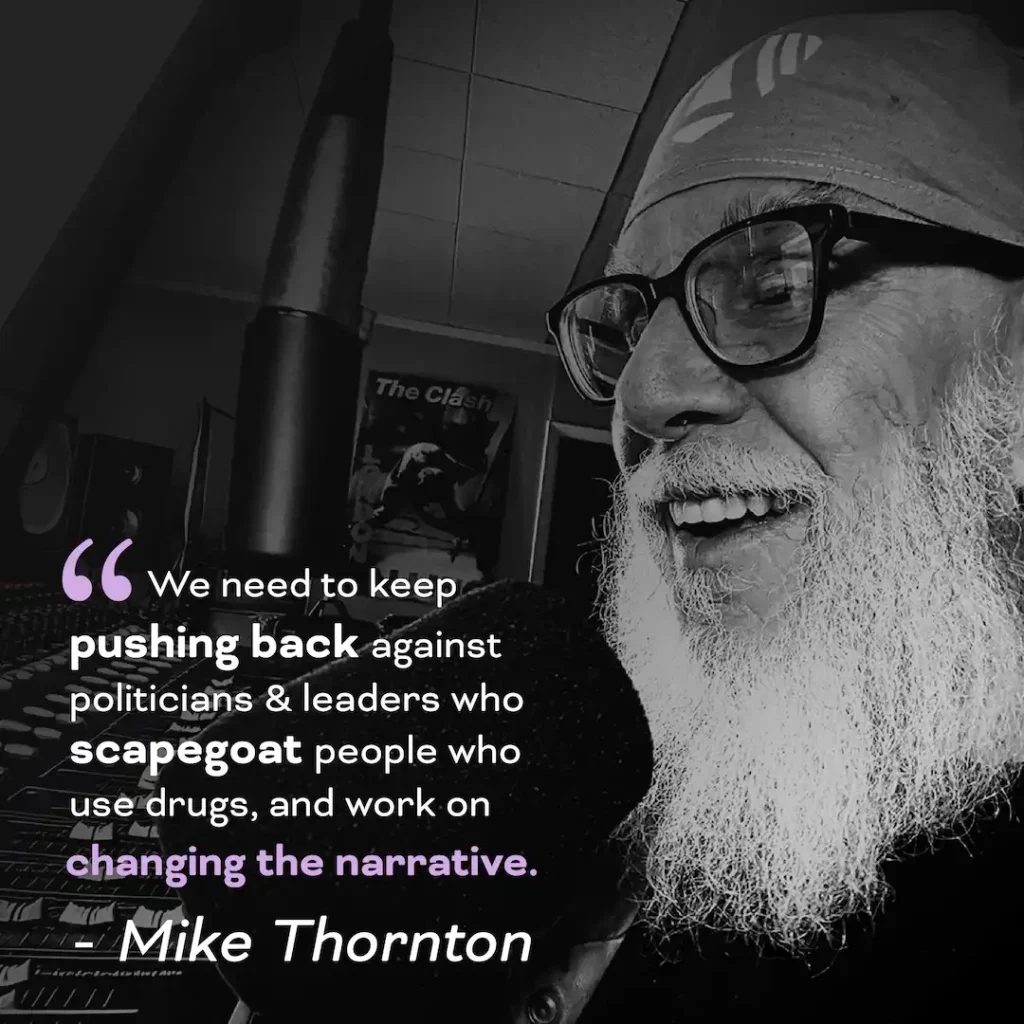A Dedicated Voice for Change: Spotlight on Mike Thornton
With firsthand experience in chaotic substance use, and an impressive resume across chemical dependency counseling, community organizing, and professional radio journalism, Mike Thornton brings deep wisdom and a multifaceted perspective to his role on CHR’s Board of Directors. As the longtime host and producer of KBRP’s Weekly Magazine—covering music, news, and interviews for Bisbee, Cochise County, and beyond—Mike is equally at home behind the mic or in the meeting room. His insights are informed not just by his career, but by his personal journey through recovery, homelessness, and incarceration. We are deeply grateful for his voice and presence during this era of growth and change at CHR.
Mike’s path to CHR began with curiosity and professional respect:
“I host a public affairs program on KBRP FM in Bisbee, and had CHR’s Executive Director, Lu Funk, as a guest several times,” he explains. “I was impressed with the work they were doing. In addition, I have both a personal and professional relationship with chaotic drug use. I was invited to consider applying for the Board of Directors and it seemed like it would be a good fit. I think it will be.”
Though relatively new to CHR’s leadership, Mike is already struck by the depth and breadth of the organization’s impact. “The main things I’ve learned is that CHR is much bigger than I thought it was and it has deep reach into and impact upon the community it serves.” As he settles into his role, he’s focused on learning the internal and external landscapes in which CHR operates, seeking to understand the challenges and opportunities unique to rural harm reduction.
“As far as CHR operating in a rural (vs. an urban) environment. There’s a lack of other support services for the people we serve.” Mike says. “Travel (distance, time and costs) are another challenge that is less of a concern in urban areas.”
Addressing these barriers will require both practical investigation and bold advocacy. Mike is honest about not having easy answers yet, emphasizing his commitment to deepening his understanding before offering solutions. “I need to do more investigation and evaluation before I can begin to propose definitive answers to these and other challenges faced by CHR and (more importantly) the people we serve!”
Mike speaks candidly about the realities harm reduction organizations face in rural settings: “CHR is what I think of as a “High Risk” nonprofit. This is not a criticism of CHR! It’s a statement about the social/political/cultural/legal environment in Cochise County and that the crucial work CHR is doing has the constant potential for bumping up against other agencies and entities while doing its work.”
Despite these headwinds, Mike remains optimistic about CHR’s role—and harm reduction’s future. He’s motivated by the possibility of evolving both policy and public perception. “The short (and easy) answer would be to legalize drugs and decriminalize poverty and homelessness. I’m of an age when ‘harm reduction’ wasn’t even considered! I think that there’s (obviously) a huge evolution that’s taken place already. ” He’s clear about what still needs to change: “Continuing work on changing the narrative about drug use and drug users along with pushing back on politicians and other community leaders who seek to exploit and scapegoat them remains a necessity.”
Mike’s introduction to harm reduction came about 20 years ago, after his own experiences with chaotic drug use. “I learned about harm reduction after that period of my life ended,” he reflects. The main misconception he hears? “That it’s facilitating people to remain drug addicts and therefore doing more harm than good to them and the community at large. In essence, I say that it makes financial and moral sense to help people remain as healthy as possible.”
He notes positive changes over time: greater recognition and acceptance for harm reduction, and tools that help stave off the worst harms—but remains alert to the risks of political rollbacks and the fragile support such work can have.
What does Mike hope for CHR’s future? “I hope to see CHR be a sustainable organization (both externally and internally) that will thrive over the long run! This takes a multifaceted approach that feels too big for me to try and answer at this time. Not “Too Big” in being somehow problematic. Just requiring a lot of strategy and making sure the right folks are at the table to insure that strategy is viable and that people are bought into it.”
His advice for those interested in nonprofit leadership: “I’d say that if they’re of a mind to serve their community and particularly (in many ways) the most alienated and disenfranchised members of our community. This is a great way to do it! I’d also say be clear on what it is you’ll be doing and why you’re doing it!”
Above all, Mike is grateful. “I’m grateful to have an opportunity to contribute to CHR’s success!”
